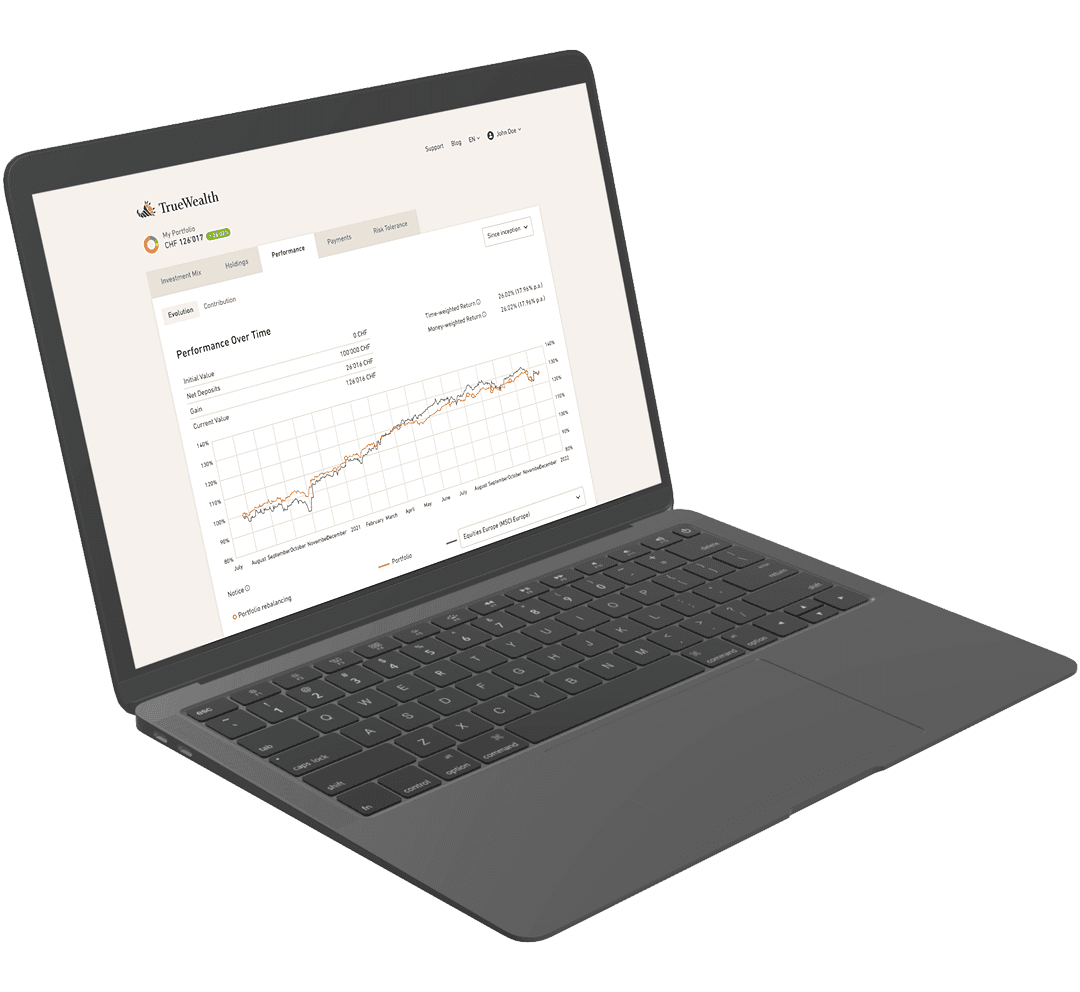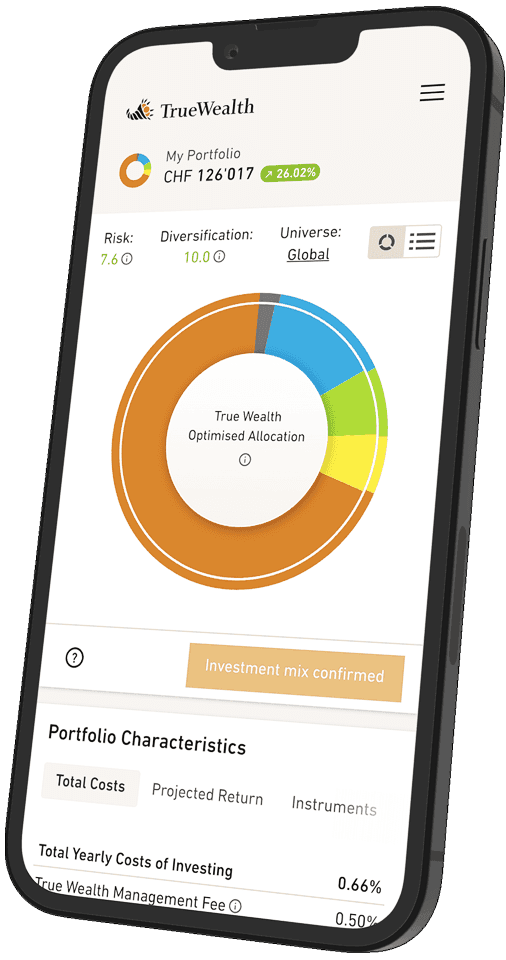
«With smart beta, often only the risk is smartly hidden»
Smart beta: how smart is it really?
At True Wealth, we rely on passive investing, on pure beta, for our clients' portfolios. But wouldn't smart beta be even smarter?
Investors have recently found a new variant on the market for exchange-traded funds (ETFs): ETFs called smart beta. In Switzerland and elsewhere in Europe, smart beta still has few investors. However, in the USA — where this trend originated — a fifth of the total ETF investment volume is already invested in products that call themselves smart. No wonder: many of these products have performed well in recent years, often better than traditional ETFs that rely purely on beta.
However, anyone expecting higher returns from them in the future must be aware that the current outperformance comes at a price: Higher costs. Higher risk. And long periods of underperformance. Let's look at these disadvantages in detail:
Higher costs
Smart beta products are at least 0.34 percent more expensive than traditional ETFs in the USA. This is because traditional ETFs are cheap, very cheap. The annual management costs for one of the cheapest ETFs on the SMI are 0.20 percent. ETFs on the US equity market are even available from 0.05 percent. The cheapest smart beta ETF on American equities is available from 0.39 percent, with many smart beta products charging up to one percent.
Are smart beta products worth the money? The performance of many of these ETFs in recent years has been respectable and in some cases could have justified the higher costs. However, it comes at the price of higher risk.
Higher risk
The shares of small companies fluctuate much more than the shares of large companies - they are therefore associated with a higher risk. But wait a minute: Why are we suddenly talking about small companies? Doesn't an ETF on an index include large and small companies in equal measure?
Yes, actually they do. But many smart beta ETFs are secretly almost small cap funds. Why is that? Let's take a quick look at how smart beta products are built: with algorithms from a quant model. Let's take the simplest example of such a model, equal weighting.
Normally, an index contains stocks in proportion to their market value.
In the Swiss Market Index with its 20 shares, Nestlé currently accounts for 24.05% (as at March 2016), Novartis for 18.44%, Roche for 17.46% and UBS for 5.86%. Swiss Life is in 20th place with just 0.86%.
If the twenty stocks in the SMI are now equally weighted, Nestlé's weighting would only be 5 percent, UBS's would still be 5 percent and the small Swiss Life would now also be 5 percent. Although the word «equal weighting» sounds neutral, it is not. On the contrary: equal weighting is a clear decision in favor of smaller companies.
You can want that — if you specifically want to strengthen the role of small companies. In fact, there are many supporters of the theory that small companies perform better than large ones. If you look at the US market since 1926, you might even be right on the surface: small caps have generated annual returns of 11.5 percent, large caps only 10 percent. However, this has not been the case in all years.
Long phases of underperformance
Small caps have underperformed large caps in two thirds of all years. Small companies did generate slightly higher returns overall over the long term. However, a few good years were responsible for this. (They were then very good.) This was the only way small companies could win the overall comparison, as Ken Fisher summarizes the state of research in the Financial Times.
As a rule, small companies perform particularly well when the broader market recovers from its all-time low. It is therefore no wonder that many of the supposedly smart ETFs are now able to report good returns: The recovery after the 2008 financial crisis was spectacular, and it was especially so for small companies.
The main contribution of small companies to their overall success comes from just a few years. This makes it difficult for human nature to remain loyal to them in the long term.
Only passive is really long-term
If you want to invest for the long term, you should not constantly rebalance your portfolio. Instead, they should choose a strategy — and then stay the course. This is the credo of passive investing. If you have this long-term mindset, we at True Wealth can make it easy and inexpensive for you to implement.
Bad stock market years are hard enough on the human psyche, even with an investment solution as transparent as True Wealth. You can also mix higher risks into your portfolio with us if you want to achieve a higher return. The big advantage: if you take higher risks with us, you know it.
However, if you take higher risks without knowing it, then that is not smart. In efficient markets, a higher return cannot have come about without higher risk. So take a close look at these products: with smart beta, it is often only the risk that is smartly hidden.
Links
- Ken Fisher: The myth of small-cap outperformance (Financial Times, 13. Juni 2014, Link hinter Paywall)
http://www.ft.com/cms/s/0/106e2ae8-f151-11e3-9fb0-00144feabdc0.html - SIX Swiss Exchange: Statistical Monthly Report 03/16
http://www.six-swiss-exchange.com/monthly_reports/productive_env/2016/03/Mb_swx_stat_201603.pdf
About the author

Founder and CEO of True Wealth. After graduating from the Swiss Federal Institute of Technology (ETH) as a physicist, Felix first spent several years in Swiss industry and then four years with a major reinsurance company in portfolio management and risk modeling.

Ready to invest?
Open accountNot sure how to start? Open a test account and upgrade to a full account later.
Open test account